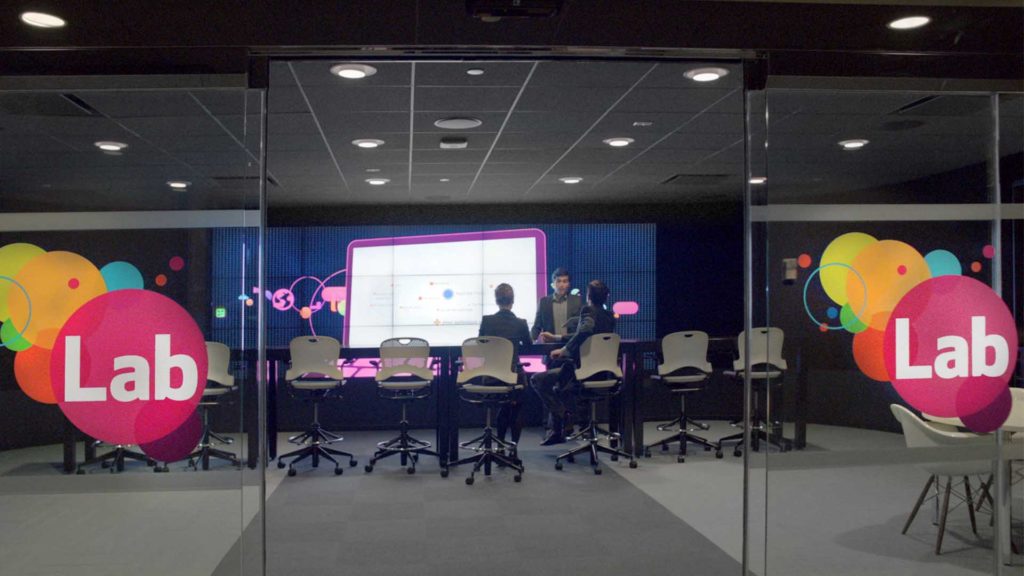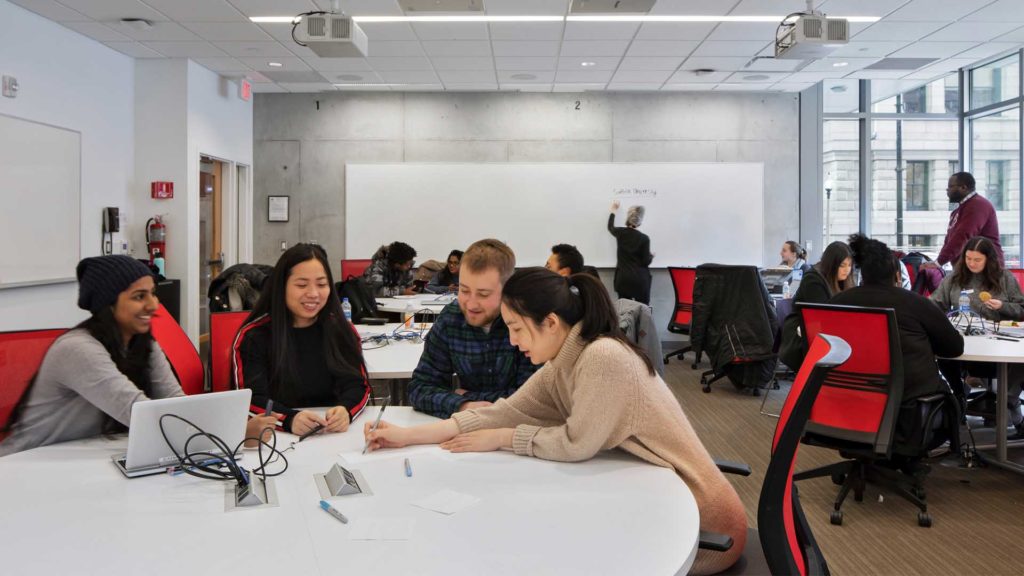Beyond Workstations: Wellness, Collaboration, and The Future Office
Posted January 8, 2021
With frontline workers and elderly citizens already receiving the vaccine for coronavirus, and doses on the way most others by the middle of the year, speculations about the future office are about to meet reality. However, companies must answer questions about who will come back to the office, who will keep working from home, and what they hope to gain from this return before that reality comes to pass. Studies of 2020’s office-less life provide mixed answers to those questions. Some studies show that task-based work can be accomplished effectively at home, other research points to employees feeling disconnected after months of remote work, while a third strain of reviews identify specific tasks, such as management and collaboration, as particularly fraught in this arrangement.
Yet regardless of how specific companies alter the future office, one aspect is clear: the new workplace will be different, focusing on healthy solutions that support personal agency, hybrid in-person/remote experiences, and interpersonal connection. But what kind of spaces will enable those solutions in our reimagined offices? We asked two NBBJ designers to envision what these new office environments could be, highlight some of the technologies that support them, and imagine how our workplace could improve with access to them.
The Cool Down Lounge

As modern offices move to provide more opportunities and amenities for wellness and mental health support, they could do so by providing a space that deemphasizes technology. While this often takes the form of an green space, another approach is a hospitality-inflected lounge where silence is a luxury and disconnecting a flex. This space would give employees permission to relax and recharge, impress clients, and facilitate connecting with co-workers in an authentic way unmediated by digital media.
“Technology has become so pervasive in everything we do, and therefore tied to our loss of work-life balance, that we need permission to escape it. This room is a physical manifestation of that permission,” said Ryan Mullenix, a leader within NBBJ’s workplace design practice. “If you’re in this space, you don’t need to ask to take a nap or a moment for yourself. We need to get people back to doing what’s best for them, because that’s when they’re doing their best work.”
Mullenix and Andrew Lazarow, Senior Designer and AV Technologist at ESI Design, both imagined a room wrapped in a kind of metal mesh that prevents digital devices from receiving any reception. Since no one’s phone would work in the room, it would naturally encourage people to log off, and avail themselves of silence. All agreed that the room could also use active noise cancelling speakers to ensure an audio-scape as serene as the visual decor.
Not that the visual decor would be sparse, but rather it wouldn’t repeat the large-scale LED displays becoming commonplace in lobbies and common spaces.
“A transparent OLED screen between two seating areas, that could seem unique even if it was just playing advertisements. It has that air of subtlety and being impressive at the same time,” Lazarow said. “Projecting animations on real plants like moss and ivy, are small gestures that can create a powerful atmosphere of calm, elegance and craftsmanship. With a wow-factor technology moment in the lobby, in the lounge it’s about focusing on disconnecting [from tech] and recharging juxtaposed with innovation.” In this space, reflection could become just as routine as checking status on a project.
The Next Collaboration Space

For some office workers (as opposed to those who rely on specialized equipment to perform their duties), working from home has improved individual productivity. But respondents to independent studies by the consulting firm Global Workplace Analytics and the real estate company Cushman and Wakefield both note that the pandemic has highlighted the value of face-to-face communications for collaborative work. Our experts echoed that feeling, and identified dedicated, technology-enabled collaboration spaces as centrally important to the hybrid offices of the future.
Here are two key elements that make this space special. First, it’s a tactile, physical space where people use real paper, write on surfaces, and move around. Second, it facilitates a hybrid work model where even employees working from home can also ‘be there’ to contribute in real time.
“There’s no reason you can’t have a big piece of paper with media projected onto it,” said Lazarow. “Imagine having a camera that reads what is happening on the paper so the physical and digital mix together.”
Lazarow went on to explain that in addition to the media-enhanced paper, digital Post-It notes made from transparent OLEDs offer a great way to facilitate hybrid collaboration. In a similar vein, digital white boards from Samsung and Google are already on market, and point the way towards a whole ecosystem of similar devices arriving in the near future.
The Digital Stage

Innovative companies like Mastercard, AT&T, and IBM already devote significant floor space and funding to tech-enabled presentation spaces, but the common label of “executive briefing center” (EBC) belies their limitations. While there is value in an elite showroom, often these spaces are dedicated to a single product or service storyline and, as the name implies, an executive audience. What if these places to convene were places of inspiration? The Digital Stage could elevate every kind of communication need, from thought leadership to internal presentations to onboarding, product launches, press conferences, and do the job of an EBC to boot.
Imagine the Digital Stage as a high-tech, immersive environment that takes the corporate theater, cavernous town hall space or an amphitheater-style staircase seating to the next level. An expansive LED screen forms a backdrop with an advanced suite of sensors to provide a real-time, reactive effects to any presentations imagery. There is theatrical stage lighting and sound to enhance and draw you into the presenters performance. If you’ve watched a TED talk, “The Masked Singer, or the Netflix show “Patriot Act with Hasan Minaj,” you’ve seen the power of this modern approach. Beyond stage shows and lectures, these backdrops are currently being used in Hollywood’s biggest blockbusters to provide in-camera special effects and set details. In your office, they will be the place to hear the latest news and be immersed in the brand culture like never before.
With these tools, companies could create interactive presentations that react to client questions in real time, drop in 3D models of potential products, or simply boost the power of a pitch with giant reactive infographics. Since this technology was originally designed for the entertainment industry, the Digital Stage could become the center of a company’s media strategy, and the production hub for its marketing and communications output.
“It is hard to take in all the information in presentations when the speaker is separate from the point of focus,” said Lazarow. “With a Digital Stage set up, there’s no distinguishing [between the speaker and the slide content] because the speaker is inside of the visual. Short of having a camera crew and shooting an actual stand up special, it’s the best way to embed people in the space.”
The Corporate Classroom

Learning happens all over the office, in casual conversations and offhanded observations. But career development and training in specific technical skills often needs a dedicated time and place. The classrooms for these types of training sessions either repurpose existing conference rooms or replicate high school-style classrooms. To elevate and accelerate professional development, innovative companies should consider investing in dedicated learning spaces.
Both Lazarow and Mullenix imagined rooms where interactive technology enables collaboration, peer-to-peer learning, and specialized technical training. Imagine a flexible space that adjusts to class size, activity type, and individual learning styles.
Lazarow, who teaches design as well as practice it, looked at using technology as a way to collect or divide the group in a physical way as they cycle through different activities. Lazarow noted that in a corporate classroom environment dynamic lighting could create intimate work areas for individuals or small groups, and localized sound could broadcast lectures or instructions to that zone without distracting the others.
For Mullenix, it all came down to inclusion and flexibility. “I’m a big fan of the garage door. I love the ability to use vertical space to go from five people [in the class] to 10 people to 20 people,” he said.
The Future Office and Beyond
These spaces are just the tip of what’s possible as offices enter into a future characterized by a hybrid of working from home and working on-site. New kinds of spaces like the ones we have referenced could invigorate employee creativity, birth new kinds of office culture, and reposition the role of work and the workplace in people’s lives. Ultimately, it will be the activities in these special spaces, more than any demands of productivity, that will provide the reason for people to leave their houses and come back to work.


Join The Conversation